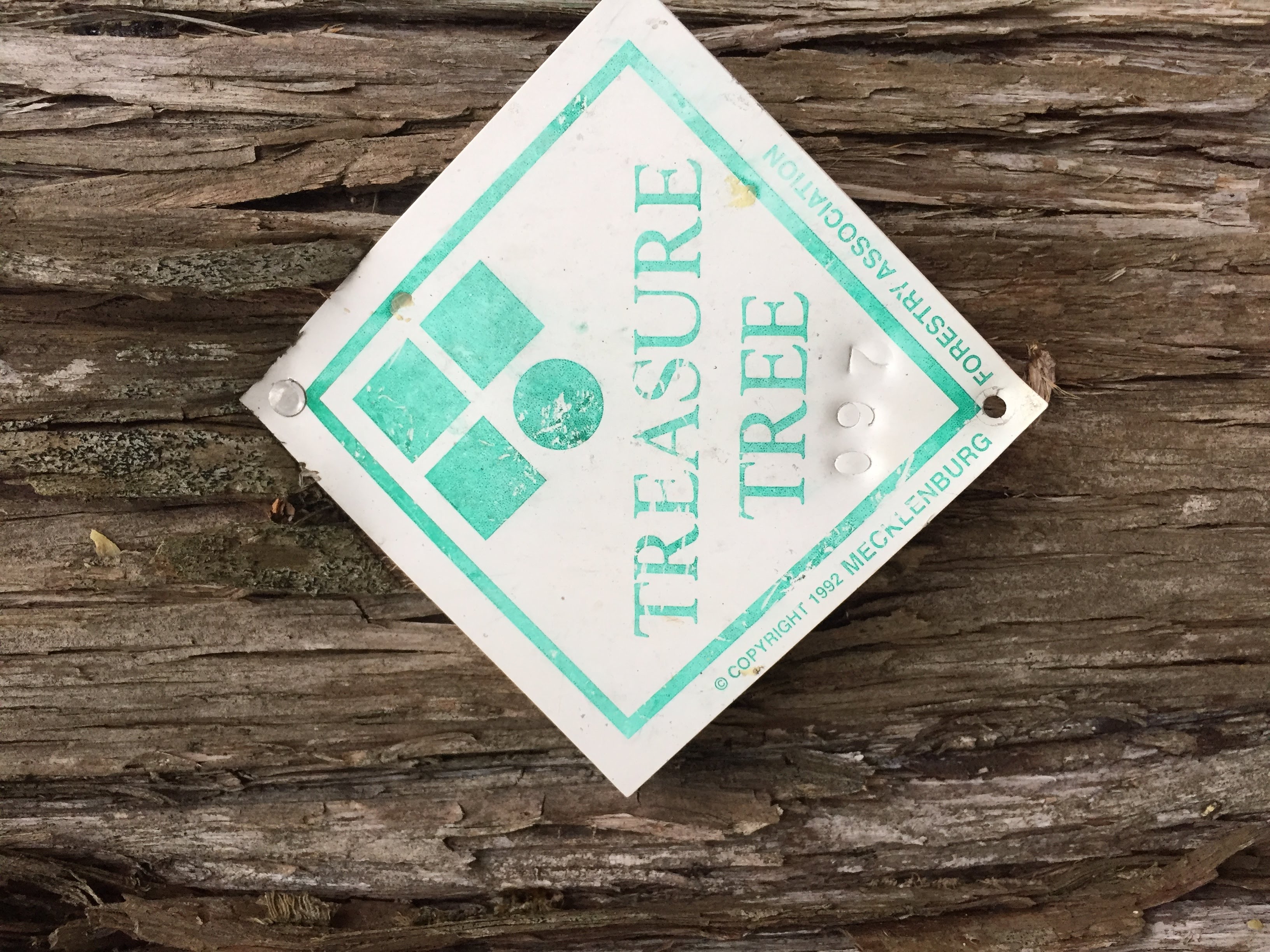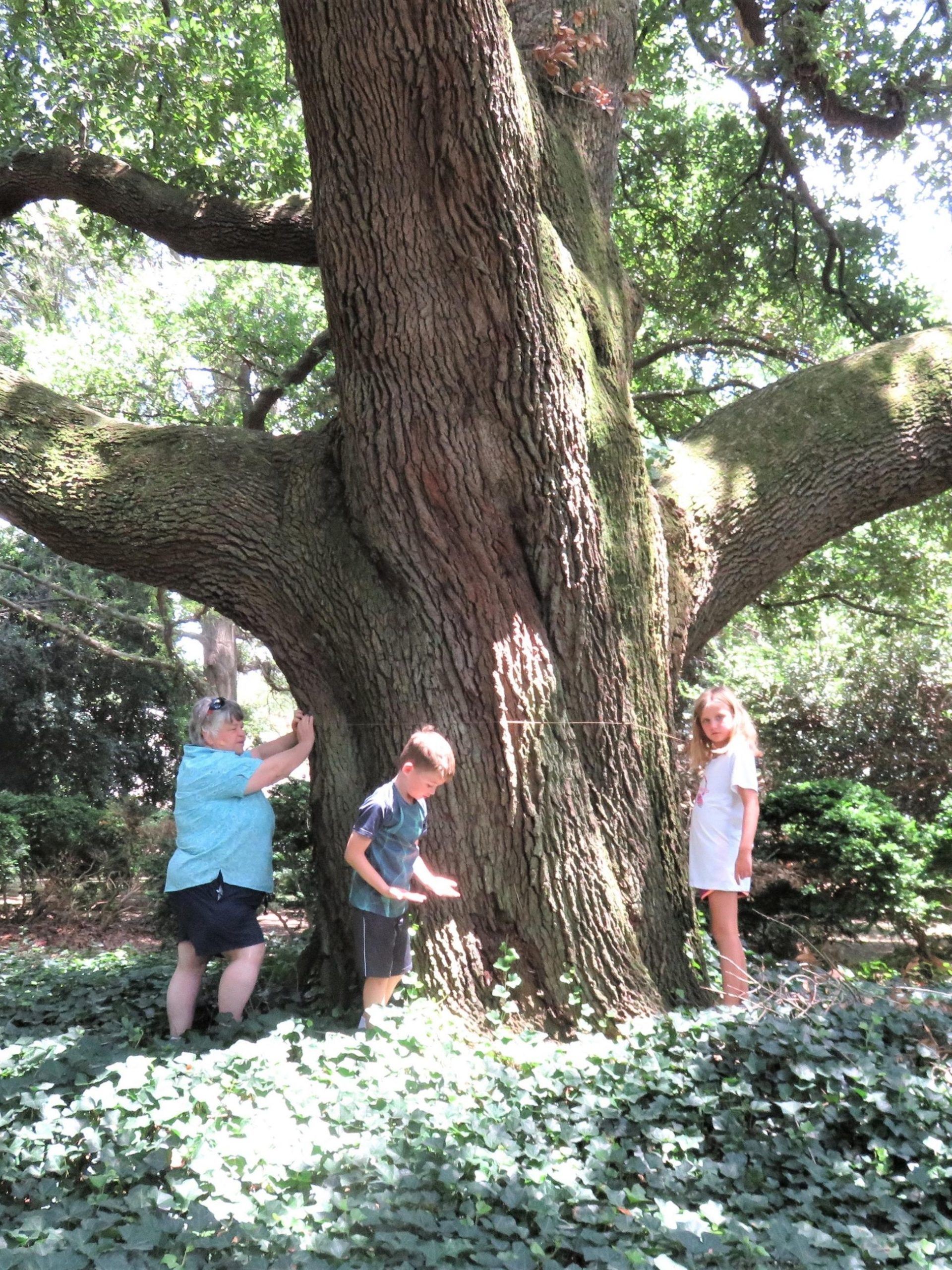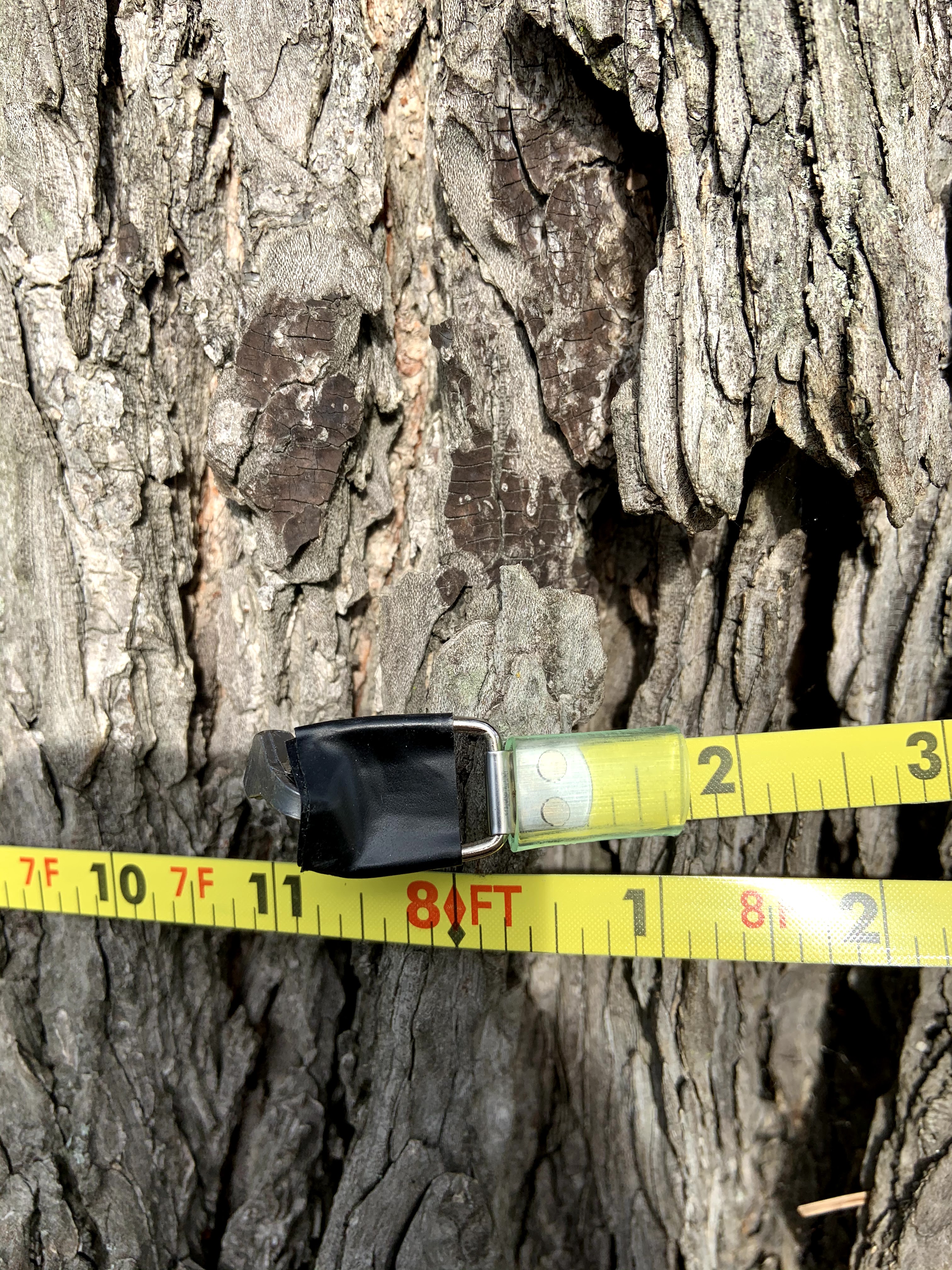The Treasure Trees Committee is excited to take nominations for new entries September 30 - April 30. Read the guidelines below to see if your tree might be a candidate and then fill out the nomination form. The Treasure Trees Committee will review the information and be in touch. Header photo by Lindsay Kappius.



Guidelines
SPECIES
A tree can be considered for Treasure Tree status if it is:
- Native or naturalized species in North Carolina
- Not categorized as an invasive species
- Resides in Mecklenburg County
Once a tree meets those criteria, it must also meet the requirements below to earn a spot on the Treasure Tree registry:
LOCATION
The goal of the Treasure Trees program is to share the stories of Mecklenburg County's largest trees in hopes of inspiring others to preserve our urban tree canopy. Therefore, trees that can be shared on our website and viewed by the public are preferred! This includes street trees, trees in parks, schools, houses of faith, businesses, and front yards.
SIZE
In the past, the Treasure Tree Program highlighted the three largest trees in Meck. County for each species. Beginning in 2025, the Treasure Trees Program will follow the National Champion Tree Program's standards and honor the largest specimen of each eligible tree species in Meck. County.
Trees of Interest
Several North Carolina native trees are no longer represented on our Treasure Tree list due to disease, disaster, development, or general removal. We'd love to find new replacements for some of the following:
- American Chestnut
- American Hornbeam
- Ash (Blue or Black)
- Birch (River, Sweet, or Yellow)
- Black Oak
- Black Gum/Black Tupelo
- Carolina Silverbell
- Devil's Walking Stick
- Eastern Redbud
- Flowering Dogwood
- Fraser Fir
- Fringe Tree
- Hickory (Bitternut, Pignut, and Shagbark)
- Hop-Hornbeam
- Longleaf Pine
- Northern Red Oak
- Overcup Oak
- Persimmon
- Red Maple
- Red Mulberry
- Sassafras
- Serviceberry
- Sourwood
- Sugar Maple
- Sweetgum
- Yellow Buckeye
Nominate a Tree
IDENTIFY YOUR TREE
Make sure your tree is the species you think it is! Use apps like PictureThis to identify your tree, find a certified arborist near you to confirm the tree species, or email us a picture at info@treescharlotte.org!
COMPARE TO OUR CURRENT TREASURE TREES
In the past, we accepted trees based on their historical significance or community importance. However, starting in 2025, we are now only honoring the largest specimen of each eligible tree species according to a point system (learn more about how trees are measured and points are calculated here).
TAKE PICTURES
Send us several pictures to ensure an accurate portrayal of your beautiful tree! Be sure to get one of the full tree, one with a person or object in for size reference, and a close-up picture of the bark or leaves if possible.
SUBMIT YOUR NOMINATION
Fill out the nomination form. We accept nominations on a rolling basis, from September 30 - April 30. In the summer, we will measure nominations and visit your tree!
Treasure Tree Application
Nominate a Treasure Tree!
